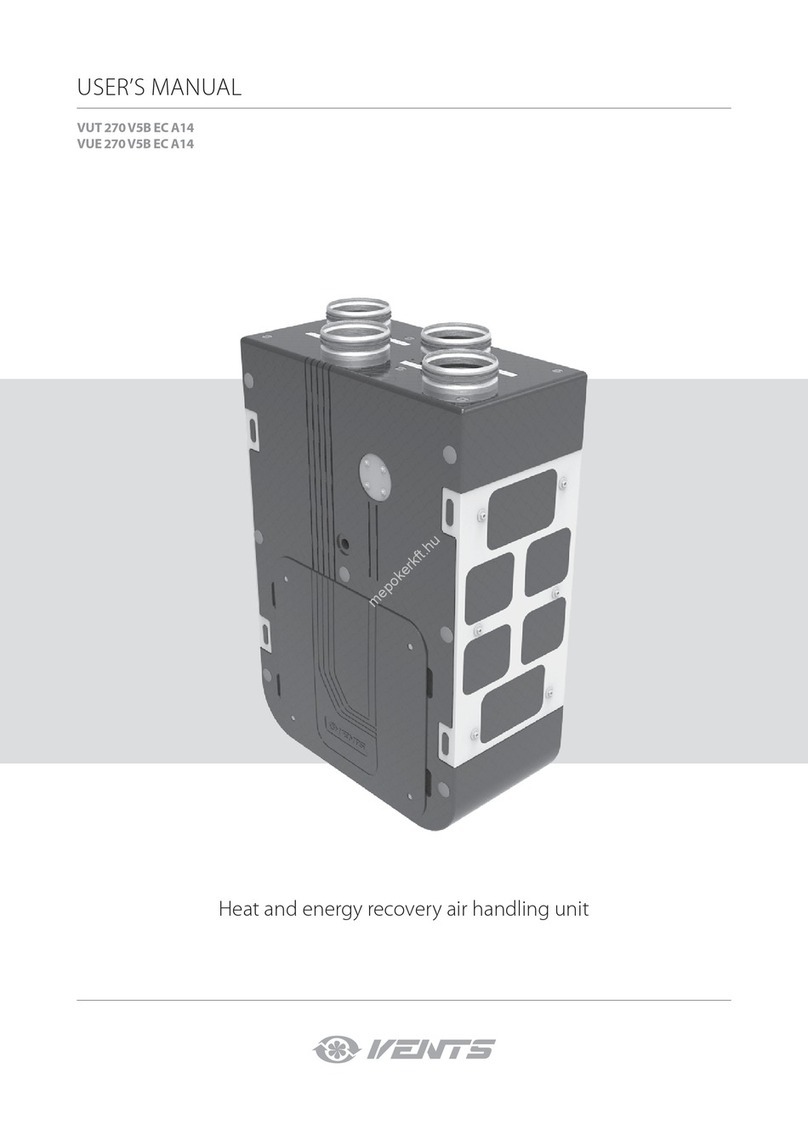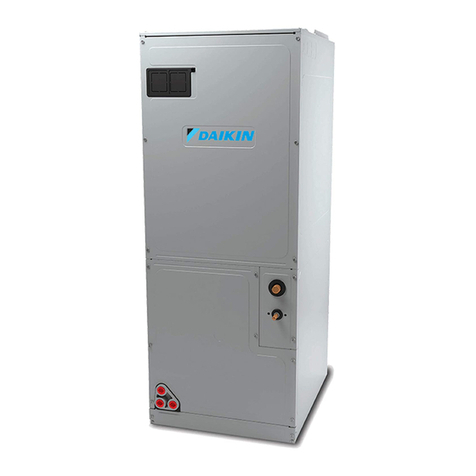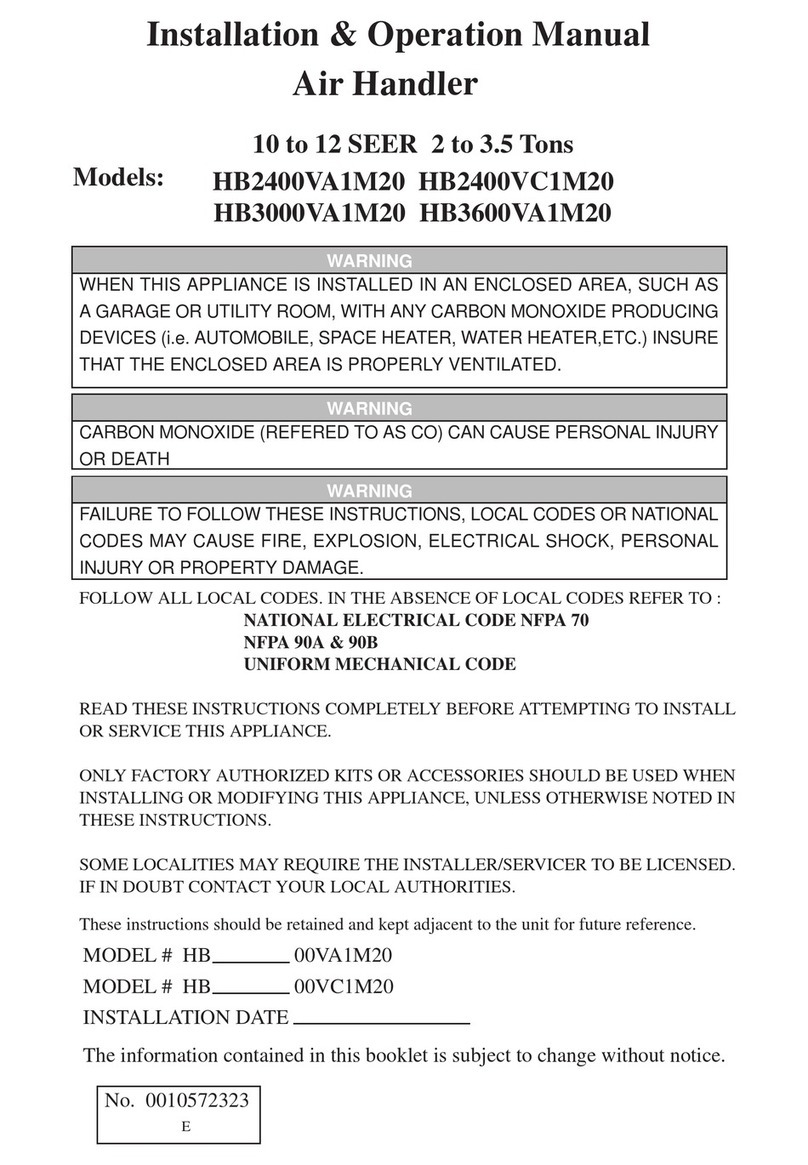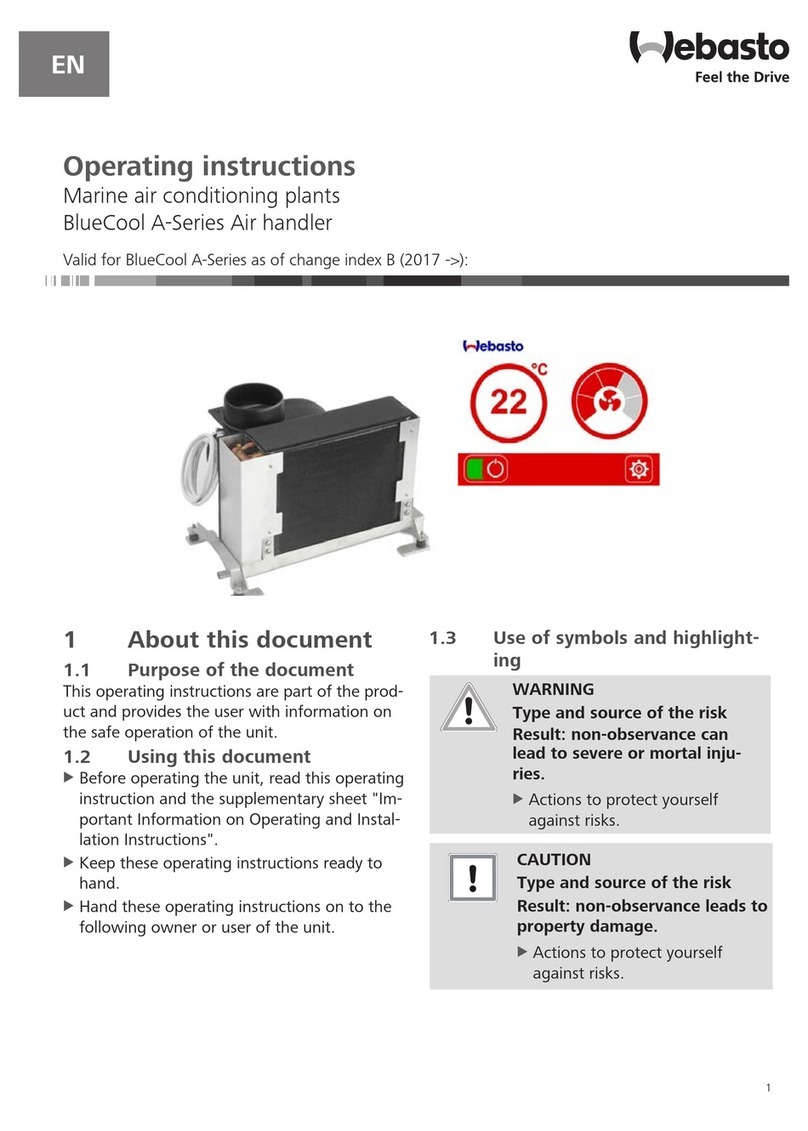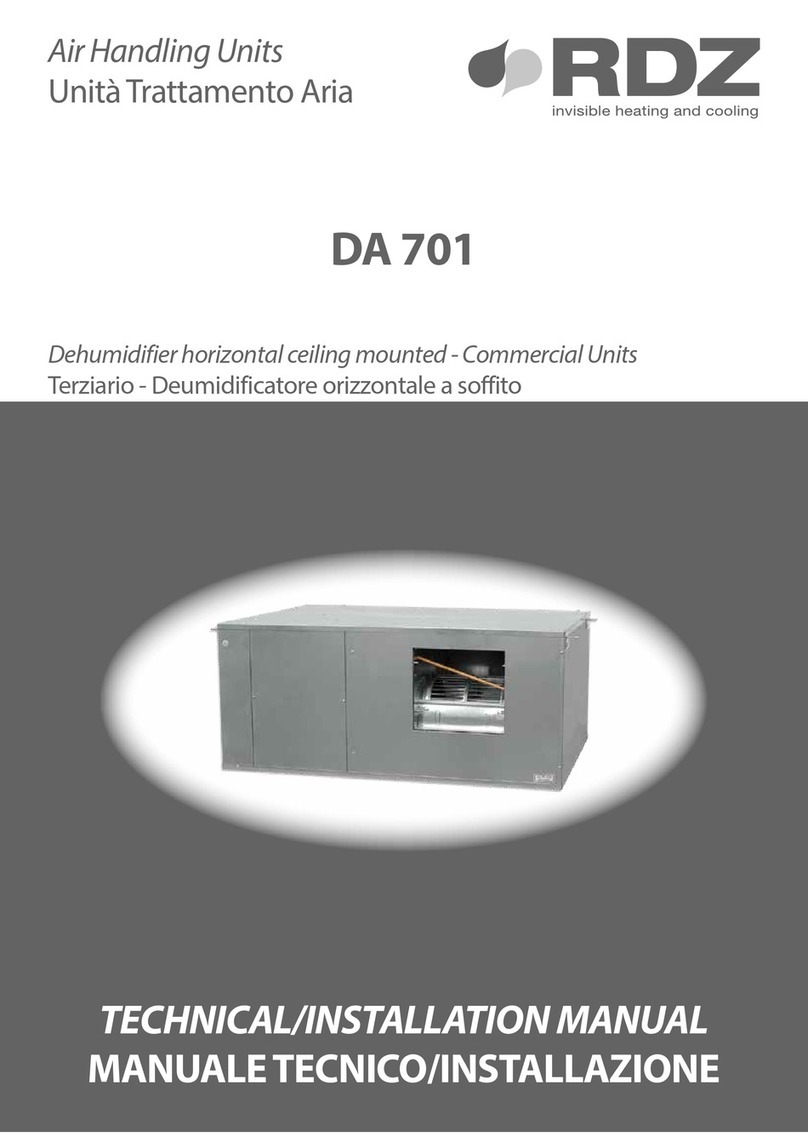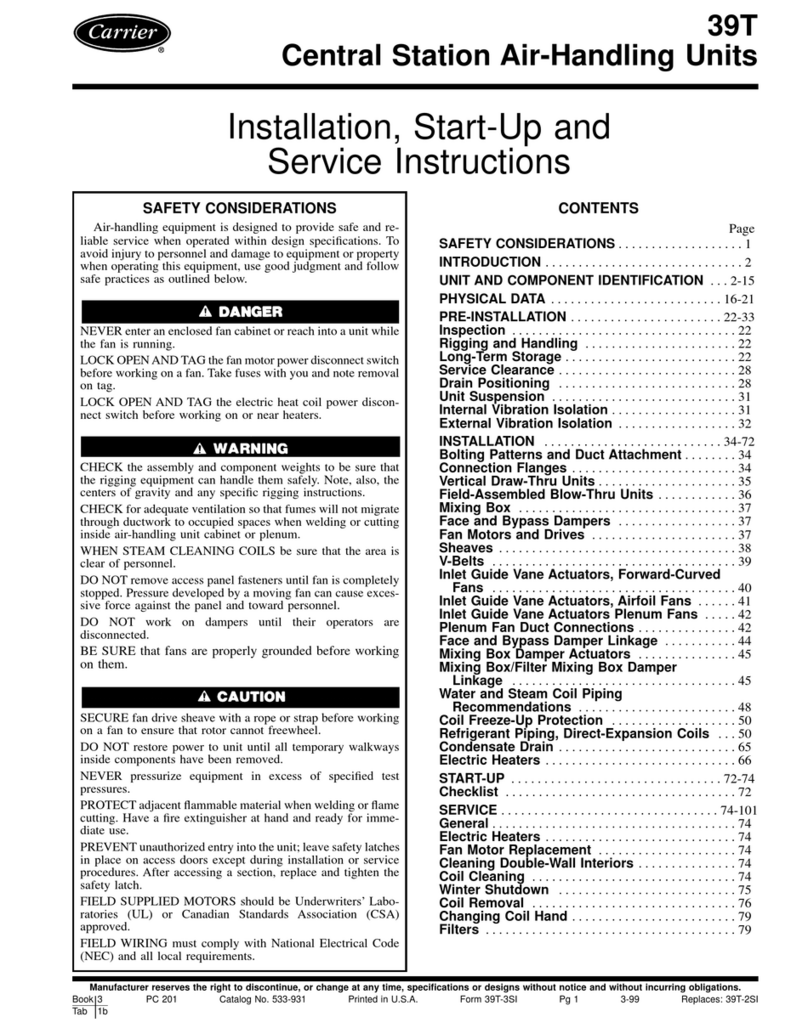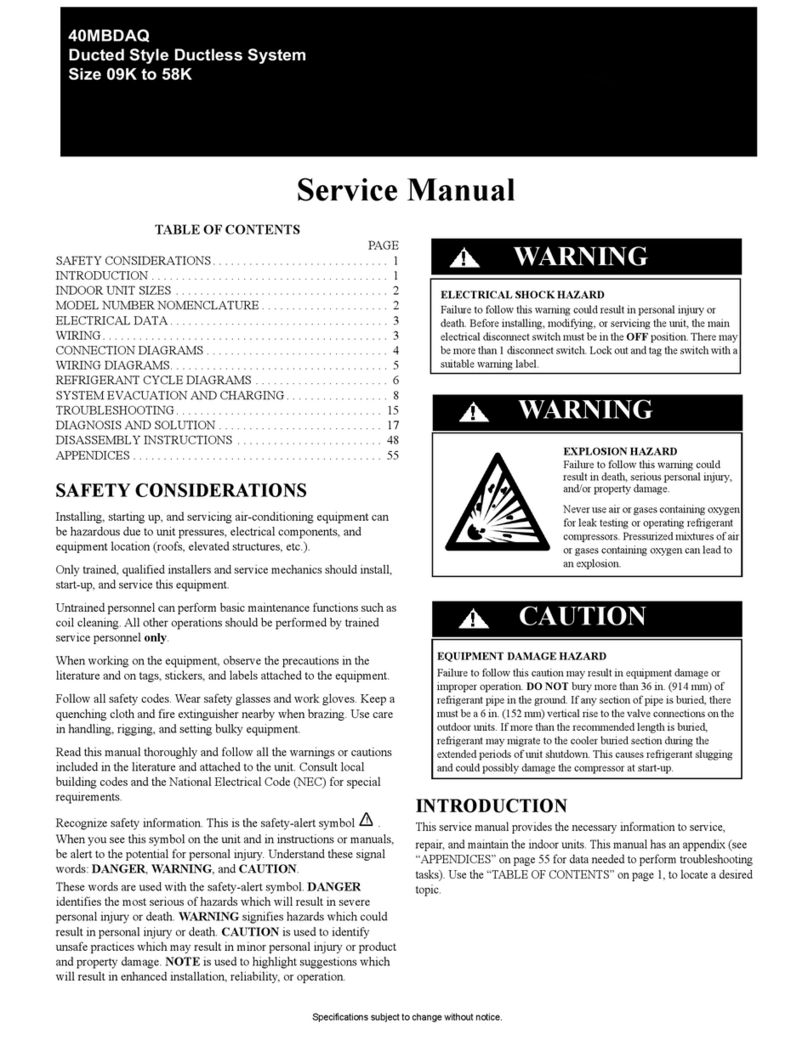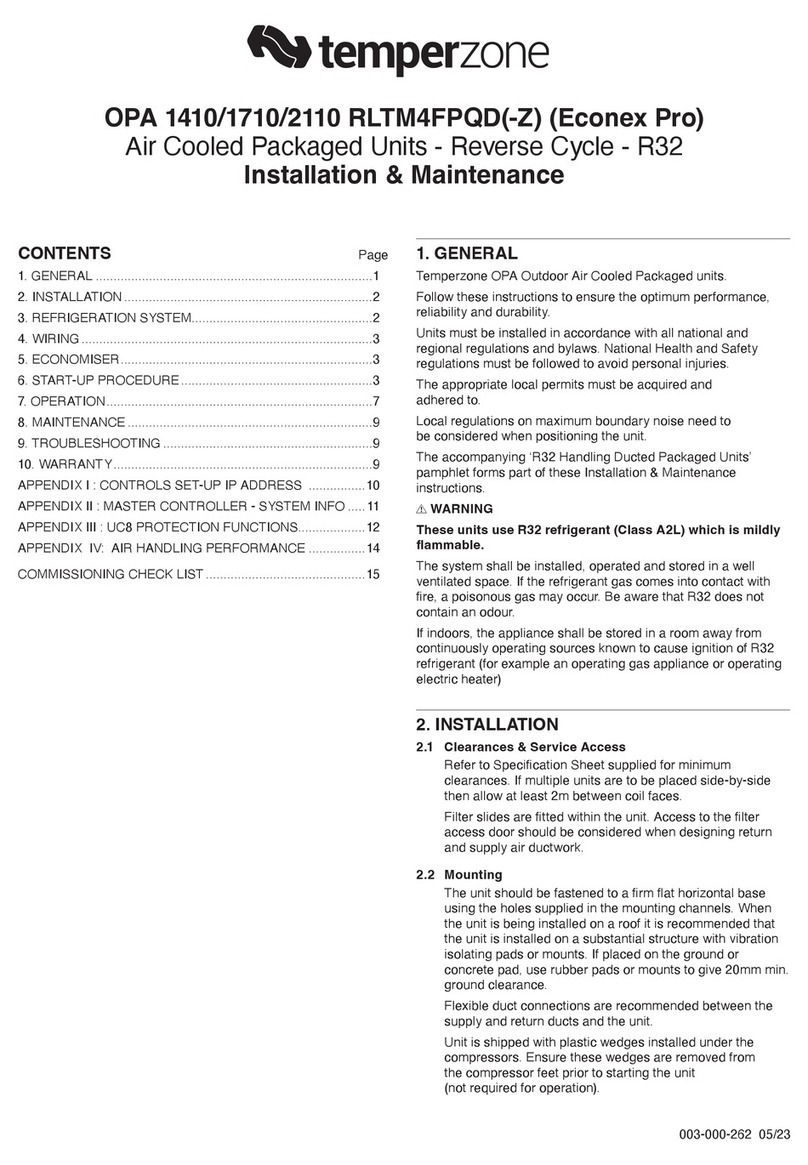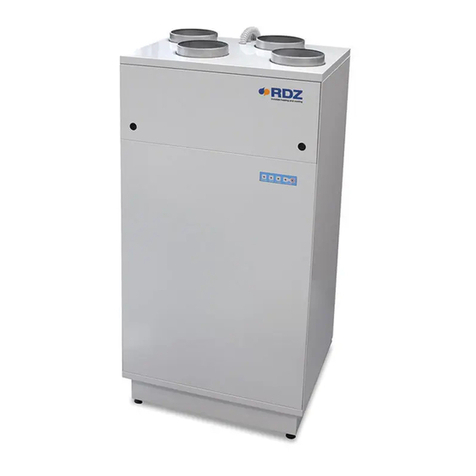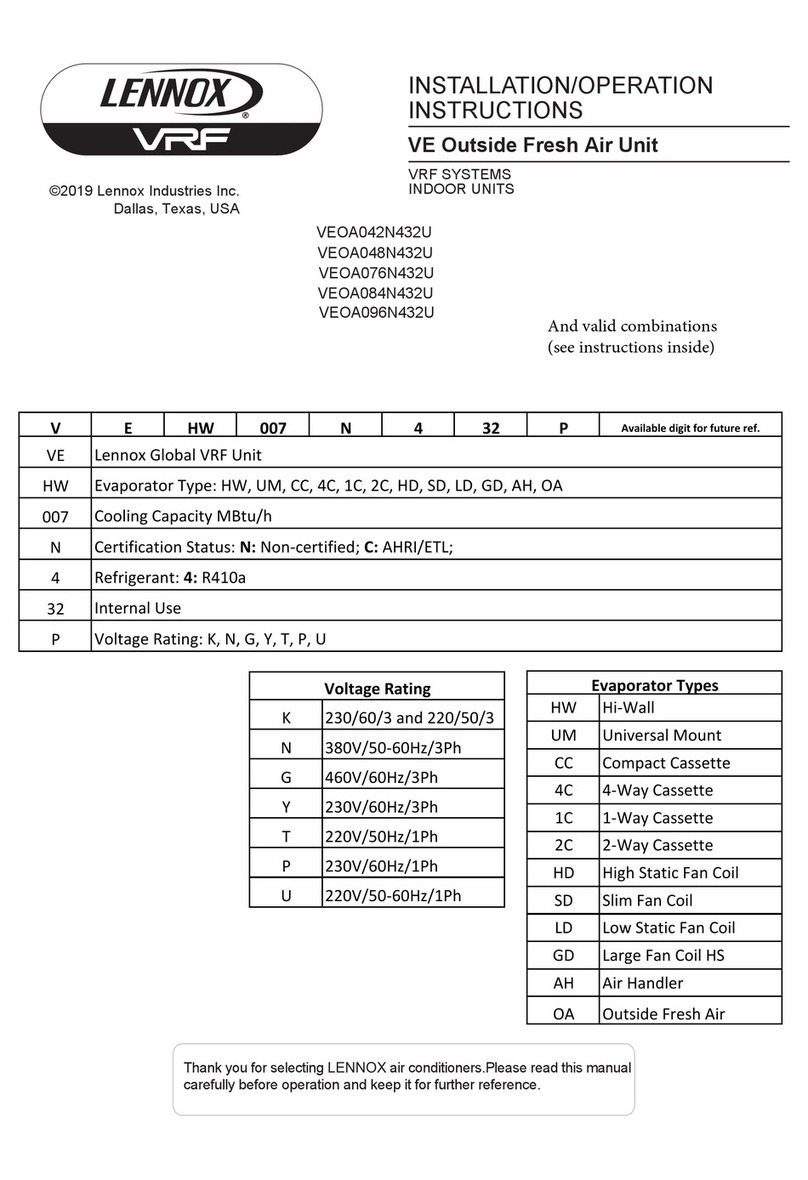ELECTRIC AIR HEATER BATTERIES
These should be wired up in accordance with I.E.E. Regulations and local by laws. It is
essential that the heater contactor is interlocked with the fan starter to prevent the heater being
energised when the fans are not running. Additionally it is recommended that a fan run on
facility is included within the controls to dissipate heat form the battery at the end of
operation. All heater batteries incorporate a safety cut-out which must be wired into the
controls system. Ensure the size of cable and contactors are suitable for load being carried. It
is not recommended for P.V.C. cable to be run into the terminal box. The cable should be
insulated with high temperature sleeving.
HEATING and COOLING COILS
General
Coils are normally designed as either cartridge arrangement where they are fitted inside the
casework of the air handling unit, or bolted directly between two sections of the AHU. All
LPHW and chilled water coils are fitted with an air vent and drain plug on the header
connections.
Drain Connections
All cooling coils include a condensate drain tray fitted with a drain connection to be
connected to an appropriate trapping system. Care must be taken to ensure that the correct
type of drain trap is used depending on positive / negative air pressure within the coil section.
Drain lines from the trap must be pitched downwards, a slope of 1 : 25 is recommended.
Installation & Maintenance of Coils
During installation care must be taken to prevent damage being caused to fins, tubes, headers
& return bends of the coil. Damage to fins can be corrected by use of a fin comb (available
from Air Handlers) all coils should be installed level and upright, unless otherwise specified.
Care must be taken to ensure the following conditions are satisfied:-
Water flow & return connections are correctly connected.
All connecting Pipework is independently supported with adequate mountings.
Any pipe movement caused by expansion or contraction must be absorbed by flexible
joints.
Coils located at high points of the system should be regularly vented, other wise coils
may become air locked causing a reduction in duty.
When connecting screwed fittings, it is necessary to restrain the back nut to avoid
damage to the coil.
Coils should be inspected every three (3) months to check for build up of foreign matter
between the fins, and that coil and connections are free from leaks. Should any foreign matter
be found cleaning should be carried out with a high pressure air line directed at the air off
face of the coil. Alternatively the coil can be washed down with a mild solution of detergent
and water, after which the coil should be thoroughly rinsed with clean water.
Eliminators should be cleaned down using a soft brush and hot water, any sediment cleared
out of drain tray and drain pipe, and if necessary repair any areas of corrosion.
Condensate Removal From Steam Coils
When air, water, or another product is heated, the temperature or heat transfer rate can
be regulated by a modulating steam pressure control valve. Since pressure and
temperature do not vary at the same rate as load, the steam trap capacity, which is
determined by the pressure differential between the trap inlet and outlet, may be
adequate at full load, but not at some lesser load.
